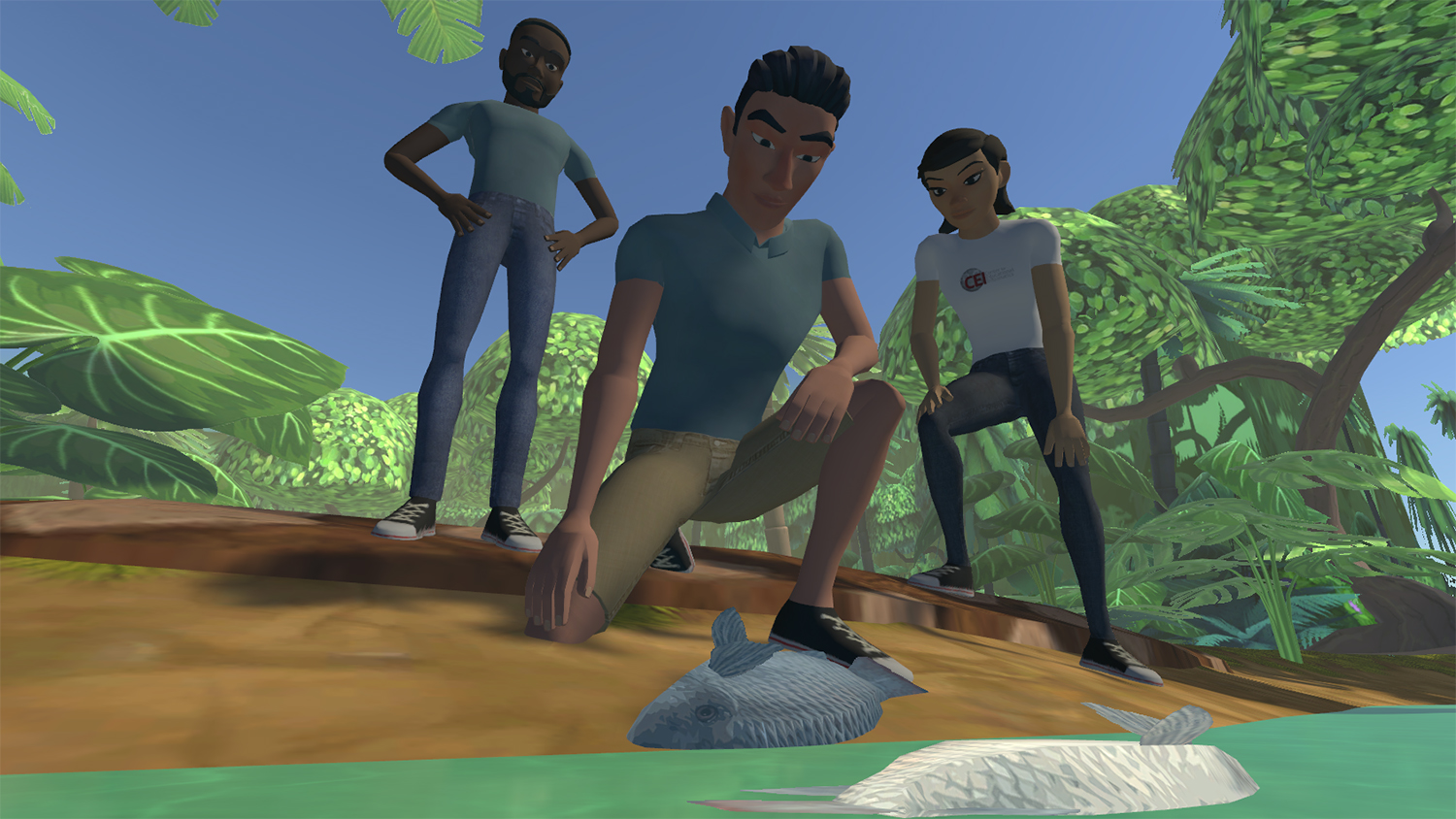Making (Fun) Multi-Player Gaming an Educational Experience

For Immediate Release
A new video game framework brings together two well-studied approaches to educational software in order to keep multiple players engrossed in the learning experience while fostering collaboration and problem solving. The framework is one of the first to integrate narrative-centered learning and collaborative learning techniques, laying the groundwork for future efforts in the field.
In proof-of-concept testing, a team of researchers from North Carolina State University and Indiana University found a game made using the framework fostered both learning and effective collaboration in sixth graders.
“There’s been a lot of work on computer-supported collaborative learning,” says Jonathan Rowe, co-author of a paper on the work and a research scientist in NC State’s Center for Educational Informatics (CEI). “But that work hasn’t focused on rich, narrative game environments – it’s been more along the lines of online discussion forums for students.
“Meanwhile, there’s also been a lot of work on narrative-centered learning environments,” Rowe says. “But those have focused largely on single-player settings – because constructing immersive games that are educational and engaging for multiple players is extremely challenging.”
“We’ve developed a conceptual framework for combining these two educational approaches – interactive narratives and collaborative, problem-based learning – and then created a software architecture and suite of game-creation tools for implementing that framework,” says Bradford Mott, first author of the paper and senior research scientist at CEI.
The paper, “Designing and Developing Interactive Narratives for Collaborative Problem-Based Learning,” will be presented at the Twelfth International Conference on Interactive Digital Storytelling, being held at the Snowbird resort in Utah from Nov. 19-22.
“One of the things we focused on here was creating a set of tools that educators can use, regardless of their programming skills,” says Robert Taylor, a research software engineer at CEI. “Specifically, allowing educators to modify a story’s dialogue and plotlines, and to see those changes almost immediately in the game.”
“Right now, this narrative editing feature is being used by our education research collaborators to help us make the best game possible,” Mott says. “But at some point, this may be a feature that can allow for classroom-specific game customization.”
The team of education and computer science researchers has already used the framework to develop a game called “Crystal Island: EcoJourneys,” which focuses on ecosystems education. In pilot testing with a group of 45 middle schoolers, the researchers found students did learn from the game and exhibited effective collaboration skills.
“We deliberately chose a complex subject, because that makes for a scenario that lends itself to team-oriented problem solving,” Rowe says. “This early-stage testing suggests that we’re on the right track.”
“We’re now developing a more polished version of ‘Crystal Island: EcoJourneys,’ which we’ll be testing on a larger scale next year,” Mott says. “More importantly, the approach we’re outlining here can already be used by others in the educational gaming community. This is an exciting area for the field.”
The paper was co-authored by Seung Lee, a research scientist at CEI, James Lester Distinguished University Professor of Computer Science and director of CEI at NC State; and Asmalina Saleh, Krista Glazewski, and Cindy Hmelo-Silver of Indiana University.
The work was done with support from the National Science Foundation under grants DRL-1561655, DUE-1561486, DRL-1934153, DRL-1934128 and DRL-1921495.
-shipman-
Note to Editors: The study abstract follows.
“Designing and Developing Interactive Narratives for Collaborative Problem-Based Learning”
Authors: Bradford W. Mott, Robert G. Taylor, Seung Y. Lee, Jonathan P. Rowe and James C. Lester, North Carolina State University; Asmalina Saleh, Krista D. Glazewski and Cindy E. Hmelo-Silver, Indiana University
Presented: Nov. 19-22, at the International Conference on Interactive Digital Storytelling, being held at the Snowbird resort in Utah.
Abstract: Narrative and collaboration are two core features of rich interactive learning. Narrative-centered learning environments offer significant potential for supporting student learning. By contextualizing learning within interactive narratives, these environments leverage students’ innate facilities for developing understandings through stories. Computer-supported collaborative learning environments offer students rich, collaborative learning experiences in which small groups of students engage in constructing artifacts, addressing disciplinary challenges, and solving problems. Narrative and collaboration have distinct affordances for learning, but combining them poses significant challenges. In this paper, we present initial work on solving this problem by introducing collaborative narrative-centered learning environments. These environments will enable small groups of students to collaboratively solve problems in rich multi-participant storyworlds. We propose a novel framework for designing and developing these environments, which we are using to create a collaborative narrative-centered learning environment for middle school ecosystems education. In the learning environment, students work on problem-solving scenarios centered on how to support optimal fish health in aquatic environments. Results from pilot testing the learning environment with 45 students suggest it supports the creation of engaging and effective collaborative narrative-centered learning experiences.


